If you’re looking to buy marijuana seeds and embark on the journey of weed growing, there’s no doubt you’re eager to gain valuable insights to nurture your marijuana seeds into thriving plants. As an ardent grower myself, I’m thrilled to share with you the key factors that I’ve learned over the years about climate control, temperature management, humidity control, and more in different cultivation environments.
Cultivating marijuana is more than just planting cannabis seeds in the soil and waiting for them to grow. In fact, growing marijuana is a complex and multifaceted process with numerous variables to consider. Among these, understanding the intricacies of climate considerations for your cultivation environment – whether indoor, outdoor, or greenhouse – is one of the most critical.
Before you get your hands on marijuana seeds, it’s essential to understand how climate control can influence the growth of marijuana seeds. An efficient climate control strategy includes temperature management, humidity control, and carbon dioxide enrichment, to name a few. You’ll need to master these to ensure your cannabis growing endeavor is a success.
Whether you’re a novice or a seasoned grower, this extensive guide will equip you with a deeper understanding of climate considerations and other significant factors, such as light intensity, ventilation systems, pest management, watering techniques, nutrient supplementation, and air circulation. Let’s dive right in!
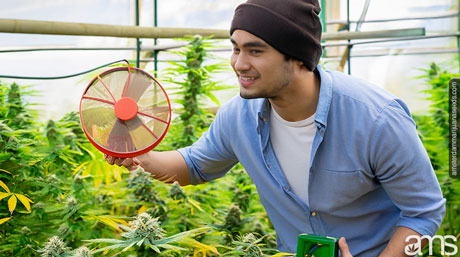
When you decide to grow marijuana indoors, you’re taking complete control of your weed seeds’ environment. This offers you the opportunity to fine-tune your growing conditions and achieve optimum growth and yield. Indoor cannabis growing involves meticulous climate control, and it begins with temperature management.
Temperature management is a pivotal factor in indoor cultivation. pot plants thrive between 70°F to 85°F (20°C to 30°C) during their vegetative phase, with a slight decrease in temperature during the flowering phase. Consistent temperature fluctuations can stress your plants, so you must invest in a quality temperature control system.
Humidity control goes hand-in-hand with temperature management in the indoor cultivation of cannabis. Humidity levels need to be regulated based on the plant’s growth phase. For example, during the seedling stage, humidity levels should be kept between 65% and 70%, gradually decreasing as the plant matures to avoid mold growth.
Another important aspect of indoor marijuana growing is the management of light intensity. Since the sun doesn’t influence indoor marijuana growth, you’ll need artificial lights that can mimic the sun’s spectrum. The light intensity should be adjusted based on the growth stage of your marijuana plants.
Indoor cannabis growing also requires well-designed ventilation systems. A good ventilation system ensures fresh air for the plants, helps control temperature and humidity, and prevents the buildup of molds and pests. I strongly recommend investing in a quality fan and exhaust system to regulate air movement.
A somewhat underrated aspect of indoor weed growing is carbon dioxide (CO2) enrichment. It’s important to remember that pot plants, like all green plants, need CO2 for photosynthesis. Higher levels of CO2 can enhance growth, but you must balance this enrichment with other environmental factors for optimum results.
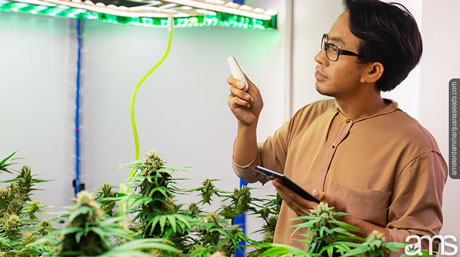
In indoor environments, pest management becomes a significant concern. Indoor conditions can quickly lead to a pest infestation if not monitored closely. Regular inspection, use of organic pest control measures, and maintaining a clean environment can help keep pests at bay.
Watering techniques and nutrient supplementation play a pivotal role in the healthy growth of weed. Overwatering or underwatering, as well as inadequate nutrition, can lead to plant stress. Monitoring the pH level of your water and ensuring a balanced nutrient supply are crucial steps in successful indoor weed growing.
Finally, don’t overlook the importance of air circulation. Circulating air aids in strengthening plant stems, reducing the risk of fungal diseases, and improving CO2 distribution. Thus, proper air circulation is a must for the well-being of your pot plants in indoor setups.
Unlike indoor cultivation, when you buy marijuana seeds for outdoor growing, you’re essentially surrendering some control over your marijuana seeds’ growth to Mother Nature. Growing marijuana outdoors has its unique set of challenges and advantages. It requires a sound understanding of climate control to ensure your cannabis growing efforts bear fruit.
The beauty of outdoor cannabis growing lies in the fact that, when correctly managed, it can lead to plants reaching their full genetic potential. The sun’s light intensity, for instance, is naturally ideal for pot plants, ensuring they photosynthesize effectively and reach their growth potential. However, excessive light intensity can also cause plants to suffer from light burn. Therefore, strategic plant placement is necessary to avoid such issues.
Temperature management in outdoor cannabis cultivation is a challenging aspect, as you are largely at the mercy of local weather conditions. Extreme temperatures can negatively impact your pot plants. Typically, marijuana thrives in temperatures between 70-85°F (20-30°C), so regions with such climates are ideal for outdoor cultivation. In less favorable climates, using climate-resistant strains or techniques like germination indoors before moving them outside can help.
Humidity control in an outdoor setting can be tricky, as it depends on the local climate. However, it’s not entirely out of your hands. In high-humidity regions, selecting a mold-resistant strain or using preventive fungicides can help manage potential mold issues. Conversely, in low-humidity areas, proper watering techniques can help maintain adequate plant moisture levels.
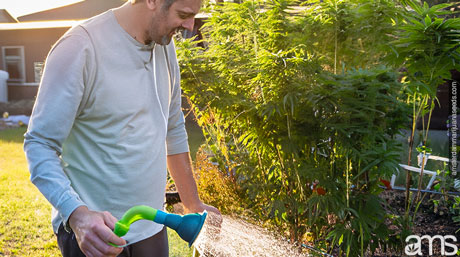
Like indoor marijuana growing, pest management is a significant factor in outdoor cultivation. Pests can infest outdoor pot plants rapidly if not monitored closely. Regular inspections and the use of organic pest control methods can mitigate this issue. In outdoor setups, introducing beneficial insects can also help manage pest populations naturally.
With outdoor weed growing, nutrient supplementation is a careful balancing act. While pot plants can often draw needed nutrients from the ground, sometimes the soil may lack certain nutrients, making supplementation necessary. Regular soil tests can help identify any nutrient deficiencies, allowing you to supplement as required.
Air circulation in an outdoor environment is generally good due to the natural wind. However, in areas with still air, it’s a good idea to ensure there’s ample space between plants to prevent mold formation and facilitate CO2 distribution. Regular pruning can also help improve air circulation around the plants.
Outdoor cannabis growing requires careful watering techniques. As rainfall can be unpredictable, monitoring the moisture level of your soil and adjusting watering schedules accordingly can help avoid overwatering or underwatering. Remember, different stages of growth require different amounts of water.
Greenhouse cultivation represents a middle ground between indoor and outdoor marijuana growing. When you buy cannabis seeds for a greenhouse setup, you’re harnessing the best of both worlds. Greenhouses allow you to control climate variables while still utilizing natural sunlight, offering an ideal environment for your marijuana seeds to flourish.
Temperature management in a greenhouse setting is much simpler compared to outdoor growing, yet offers more natural conditions than purely indoor setups. With the ability to utilize heating and cooling systems, you can maintain ideal temperatures for your cannabis plants throughout their growth cycle.
Humidity control is also more manageable in a greenhouse. Using dehumidifiers or humidifiers as needed, you can ensure your plants have the right moisture levels to avoid mold and other issues. Automated systems can even adjust these levels based on the time of day and the plants’ growth stage.
Like outdoor weed growing, a greenhouse utilizes the sun’s light intensity, providing a natural light source for your plants. Yet, you can also use supplemental lighting when necessary, ensuring your cannabis plants get the right amount and intensity of light year-round.

Ventilation systems in a greenhouse are essential for regulating temperature, humidity, and CO2 levels. These systems ensure a constant supply of fresh air, preventing pest and disease buildup. They also facilitate the effective circulation of air, improving the overall health of your cannabis plants.
One of the most significant advantages of greenhouse cultivation is the ability to enrich the environment with CO2, just like in indoor setups. By enhancing CO2 levels in your greenhouse, you can dramatically boost your cannabis plants’ growth rates.
In a greenhouse, pest management takes on an even more critical role. Since greenhouses are semi-closed systems, pest infestations can quickly spiral out of control if not kept in check. Regular inspections, use of organic pest control methods, and maintaining a clean environment are as vital in a greenhouse setup as they are in indoor or outdoor environments.
Lastly, watering techniques and nutrient supplementation in a greenhouse environment are much like those for indoor growing. Regular soil testing, careful watering schedules, and proper nutrient supplementation will ensure your cannabis plants grow to their full potential.
With these comprehensive insights, you are now equipped with the necessary knowledge to succeed in your marijuana growing journey, irrespective of your cultivation environment. Whether you choose indoor, outdoor, or greenhouse cultivation, remember that each environment presents its unique set of challenges and benefits. With careful consideration of climate control factors, you can nurture your marijuana seeds into thriving cannabis plants.
Find more answers to your growing questions in our “Cannabis growing FAQ”
The ideal temperature for cannabis cultivation typically ranges between 70-85°F (21-29°C) during the day and 58-70°F (14-21°C) at night, depending on the growth stage of the plant.
Humidity control is crucial, as high humidity can lead to mold and mildew, while low humidity can cause the plant to dry out. The ideal humidity level varies by growth stage, generally between 40-60%.
CO2 is vital for photosynthesis. Increasing CO2 levels in a controlled environment can boost plant growth and yields, especially during the flowering stage.













Related Posts
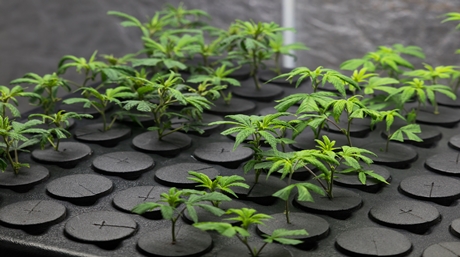
When some people hear the word cloning for the first time, they think that it is something that will come in the future. However, the truth is plant cloning – even marijuana cloning is a practice most weed growers do on a regular basis.
Therefore, if you are looking for answers on how to clone a marijuana plant, this is the right place to be. Before we look at the various ways on how to clone marijuana plants, it is important to know what cloning means.
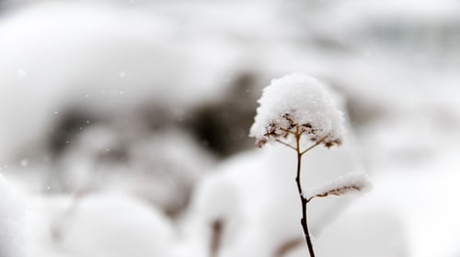
Growing marijuana in the extreme cold of winter can be very difficult as the plant struggles through the season.
You need a few growing hacks to help you through those times of the year when the temperature isn’t favorable for cannabis cultivation.
But, it is still possible to grow cannabis during this time of the year. All you have to do is understand the growing tips to keep your plant healthy if you are ready.
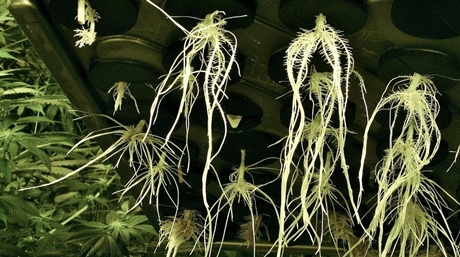
Like all flowering plants, marijuana is supposed to smell wonderful and flowery. If the marijuana you’re growing starts to smell like rotten eggs, then you know you have a problem and it might just be root rot.